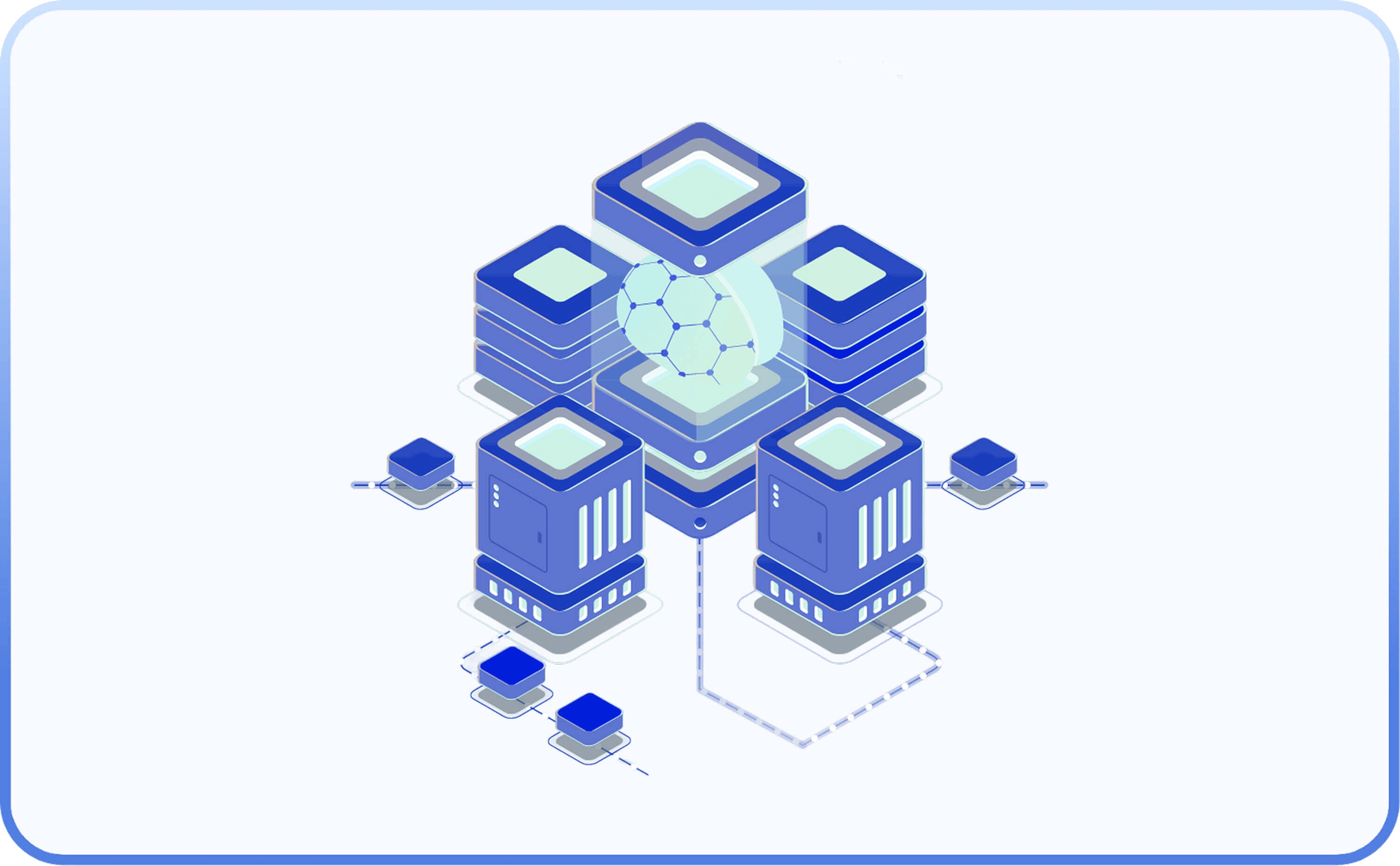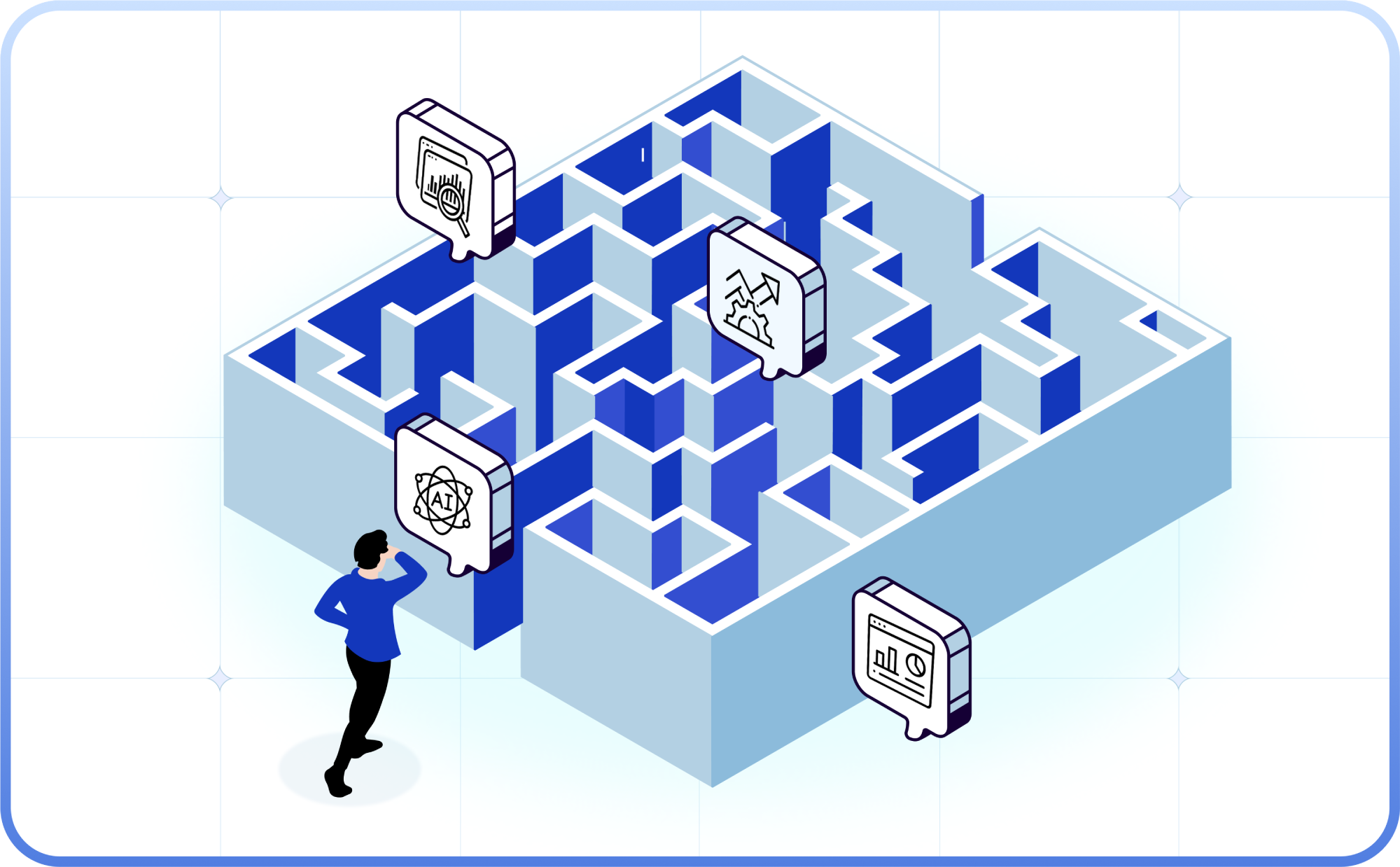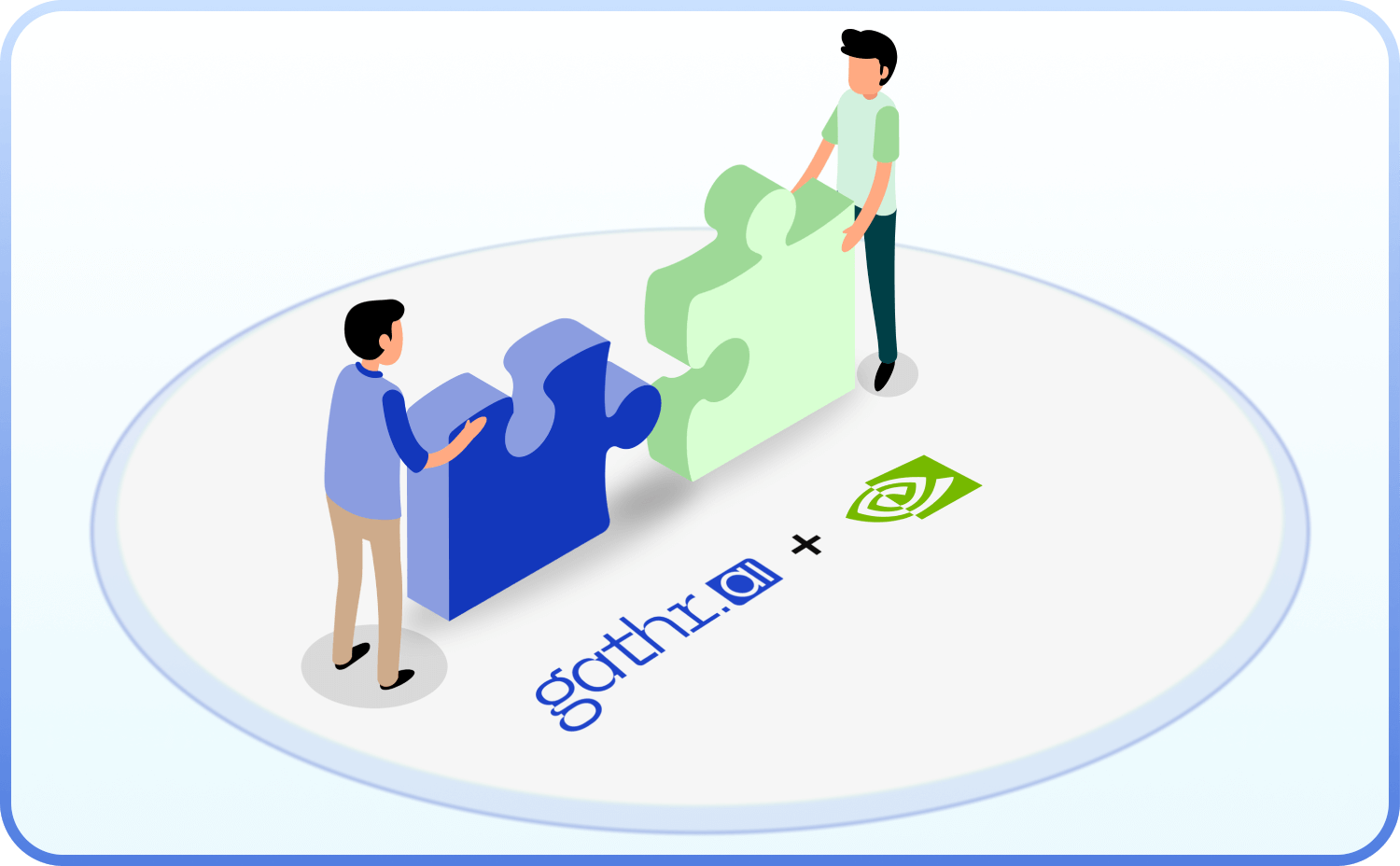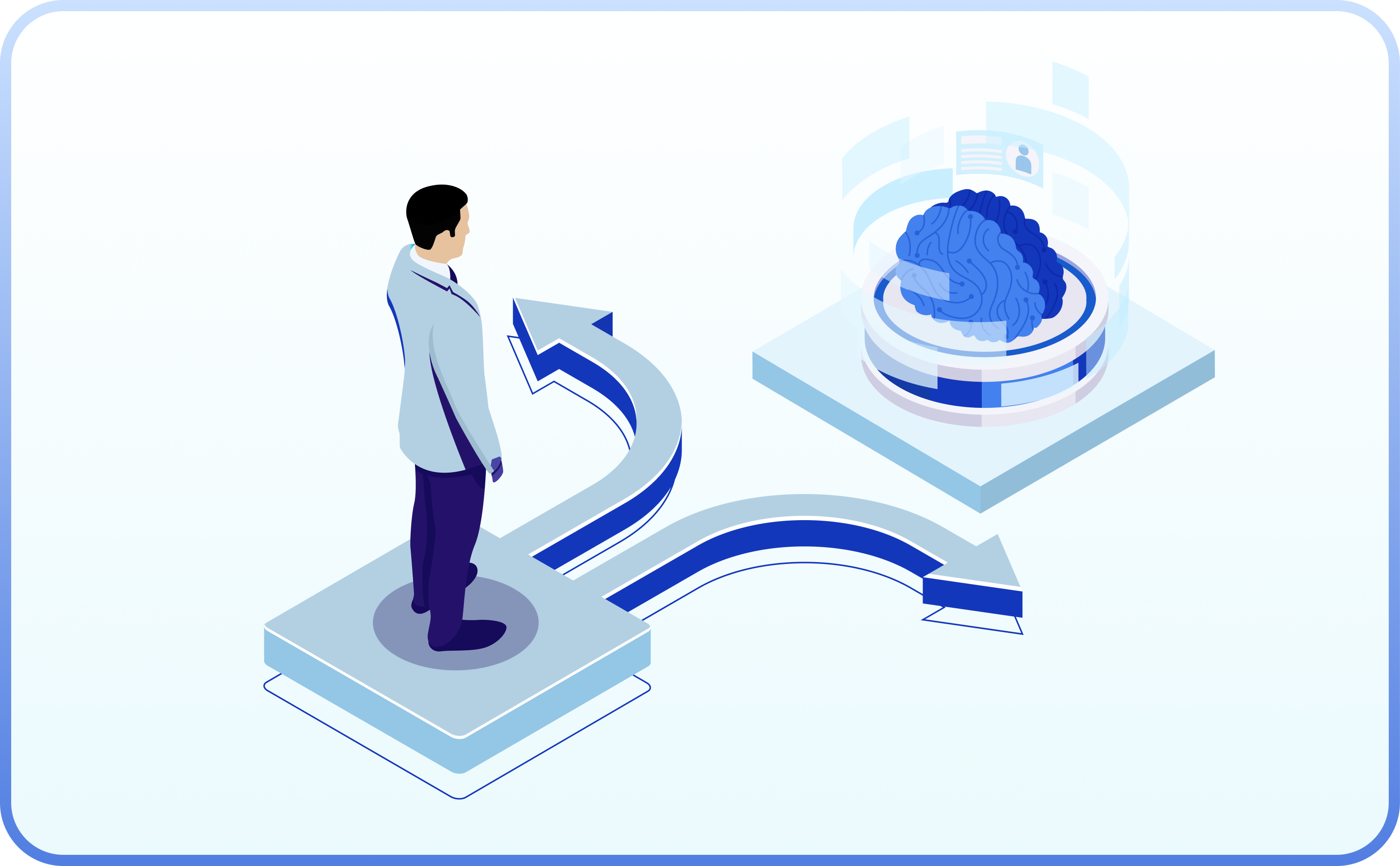Summary
Artificial intelligence (AI) has rapidly evolved into an embedded, autonomous and invisible force powering everyday experiences for both individuals and businesses. This blog explores the rise of ‘invisible AI’, the technologies enabling it, real-world applications, and the challenges of adopting it at scale.
Artificial intelligence (AI) is now so deeply woven into every aspect of our lives that we often fail to notice its presence. From personalized recommendations to process automation and advanced analytics, AI now works quietly in the background, making things faster, smarter, and more tailored for both businesses and individuals. In the past, AI demanded direct human engagement involving manual programming and explicit instructions. Over the years, it has transitioned into an embedded, autonomous and invisible force that effectively operates in the background, quietly powering everyday human experiences.
This silent revolution has opened new avenues to improve productivity, efficiency, and revenue for companies. *According to a recent report by McKinsey, 78% of organizations have adopted AI in atleast one function, and are also using AI in more business functions than before. This article explores the unseen integration of AI into daily life and its transformative role across industries. It looks at the breakthroughs driving this change, how businesses and consumers are benefiting, and the real-world challenges that come with relying on AI.
The evolution of AI: From explicit to invisible intelligence
The transformation of AI from a highly user-accountable tool to a fully autonomous and almost invisible system is a fascinating journey. Early AI systems were developed with rigid rules that limited their adaptability. For example, early diagnostic tools had set rules which restrained innovation, as these systems operated on static principles and had no capacity to learn and evolve.
The introduction of machine learning (ML) paved the path for real improvement. For example, Google’s search algorithms could learn over time, and began personalizing search results based on each individual user’s prior activity. Today, autonomous AI systems require minimal human engagement and can produce highly accurate outcomes. As a result, AI is rapidly evolving to become a core ‘behind the scenes’ enabler for several business processes and functions.
Key technologies powering invisible AI
- Edge AI & on-device processing: With Edge AI, models can run locally on smartphones, IoT devices, and wearables, decreasing the dependency on cloud computing while bringing in real-time decision-making capabilities. Shifting AI processing closer to the data source makes AI-powered experiences faster and more secure. Example: Apple’s Neural Engine enhances camera and image processing by putting AI in action on the device chip itself.
- Self-learning: Self learning, or continuous learning, helps AI models consistently adapt and improve by learning from diverse, incoming user data without the need for retraining. This capability is particularly useful for systems that need to rapidly evolve in dynamic environments. Example: Cybersecurity systems need to continuously learn from new transactional data and enhance their ability to identify fraudulent activities.
- Federated learning: Federated learning allows invisible AI models to be trained across decentralized data sources while keeping the data localized and private. This enables organizations to collaborate and build models without sharing sensitive user information. Example: In healthcare, federated learning enhances compliance by making it possible to securely train models on patient data while keeping the data on-site and private.
- Reinforcement learning (RL): In this branch of machine learning, AI agents learn how to make optimal decisions through trial and error. Based on their actions, they receive feedback in the form of cumulative rewards or penalties. Example: In autonomous cars, AI operates in the background, enabling the vehicle to brake, navigate lanes, optimize energy efficiencies, and dynamically change routes without human intervention.
- AutoAI and AutoML: AutoAI democratizes AI by enabling organizations to build and fine-tune machine learning models without human training. It automates data preparation, helps put the best performing pipelines into production and fine-tunes models for real-world performance, optimizing speed, accuracy, and efficiency. Example: Google’s AutoML has brought this technology to life for various applications—from image classification to predictive analytics.
- Neural Networks: Neural networks, particularly Convolutional Neural Networks (CNNs) or Recurrent Neural Networks (RNNs) play a key role in powering invisible AI systems. CNNs recognize patterns, objects, and features, while RNNs process sequential data (like text and speech). These models excel at handling unstructured data and have helped advance computer vision, speech recognition, and natural language processing. Example: CNNs enable facial recognition in smart phones and RNNs help virtual assistants like Alexa and Siri respond to user commands in real-time.
- Black Box AI: Black box AI systems arrive at decisions without providing any explanation about the underlying reasoning or logic. While these systems can silently perform complex tasks, experts raise concerns around their transparency and accountability. Example: Many traders now use algorithmic trading platforms powered by black box models to take fast decisions while buying, selling, and managing stocks.
- Explainable AI (XAI): This technology focuses on unpacking the black box by making AI systems more transparent, interpretable, and easy to understand. As AI models become more complex, XAI provides explanations for their decisions, helping organizations address some of the accountability and ethical concerns of AI. Example: In healthcare, it explains the predictions of AI-based diagnostic tools, helping doctors understand the ‘why’ behind a particular diagnosis or treatment recommendation.
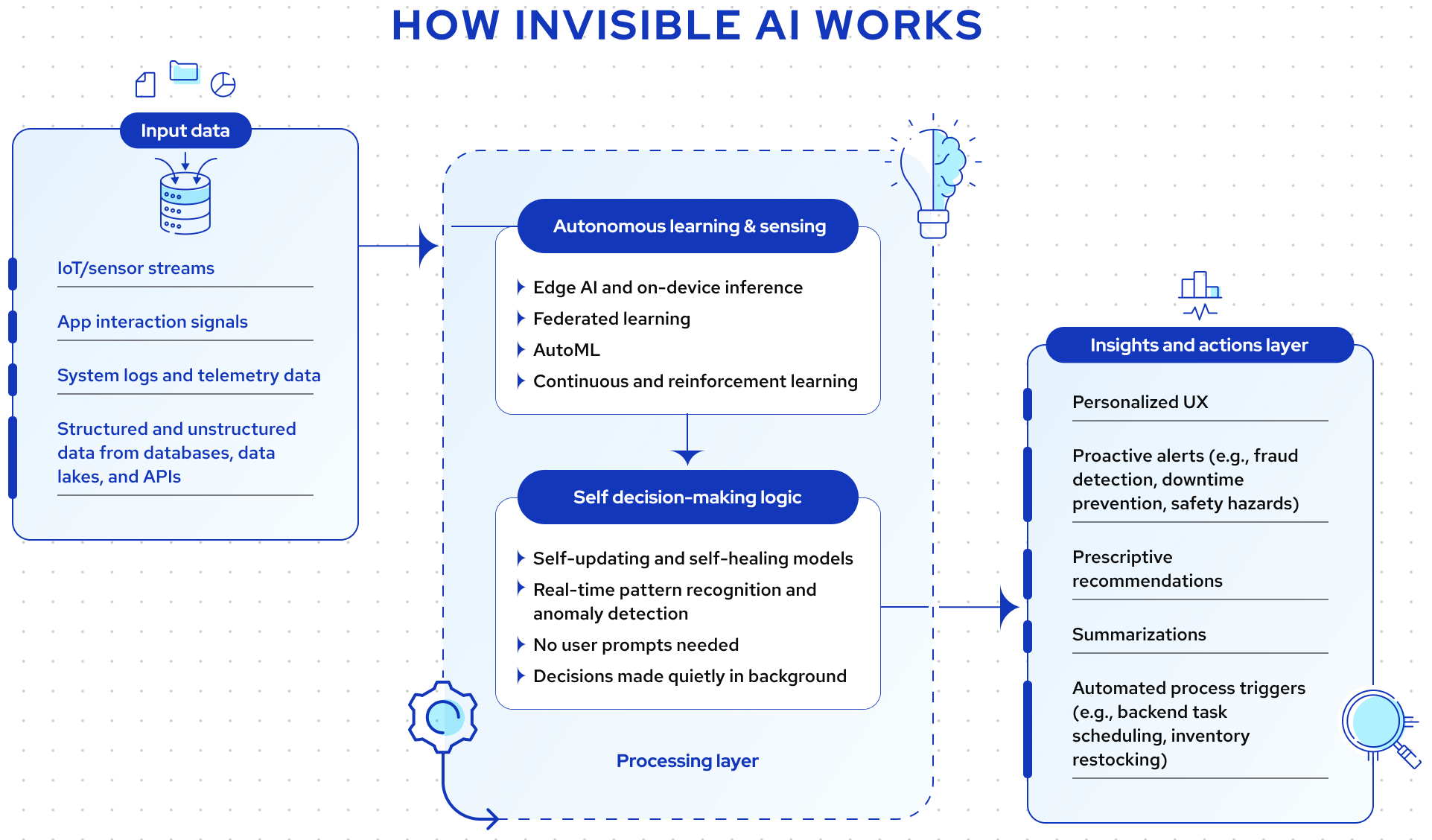
Real-world applications of invisible AI
As it operates discreetly in the background, AI is demonstrating its value across diverse use cases while continually advancing to drive even better results. Here’s a glimpse:
- Personal consumer technology: By learning individual preferences, smart assistants like Alexa, Siri, and Google Assistant enhance user experiences through natural responses to requests. Streaming services such as Netflix, Spotify, and YouTube dynamically curate content based on passive user behavior. E-commerce platforms, including Amazon and Shopify, offer targeted product suggestions, often anticipating user needs. In smart homes, AI-driven systems automate lighting, security, and climate control, adjusting settings without direct user input.
- Healthcare and pharmaceuticals: Advanced AI-powered tools are transforming healthcare by offering real-time analysis of medical images, flagging potential issues before a doctor even reviews them. Wearable devices like the Apple Watch and Garmin continuously monitor vital signs, detecting irregularities and sending alerts without disrupting users’ daily routines. AI accelerates drug development by quickly analyzing molecular structures to identify promising compounds that reduce time to market for new treatments.
- Banking and finance: The financial sector benefits from invisible AI by embedding intelligence directly into processes without disrupting workflows. AI-powered algorithmic trading autonomously executes transactions at speeds beyond human capability, optimizing portfolios in real time. Fraud detection systems work silently in the background, identifying irregular transactions and blocking threats without requiring manual review. Conversational AI in banking helps proactively understand customers’ spending habits, offering financial insights, and making transactions quicker and more convenient.
These are just a few examples of how invisible AI is driving transformation for both organizations and individuals. By delivering personalized experiences, anticipating needs, and streamlining interactions, AI is helping companies enhance user experiences, customer satisfaction, and brand loyalty. Simultaneously it improves operational efficiencies by optimizing resource utilization, automating cost-intensive processes, and enabling smarter decision-making.
Business challenges in adopting invisible AI
Despite its potential to drive efficiency and innovation, AI adoption comes with several challenges, including high implementation costs, integration complexities, and skilling gaps. Beyond these, invisible AI also introduces several other concerns:
- Transparency and trust concerns: Ethical concerns arise from invisible AI systems that cannot be easily understood, particularly in the absence of adequate justification for the decision taken.
- Compliance risks: Regulations like the EU AI Act, GDPR, and U.S. data governance policies are continuously evolving. AI’s hidden nature makes it challenging for businesses to track, audit, and explain decisions, which poses major regulatory risks for organizations.
- Incomplete data context: AI’s effectiveness depends on accurate and consistent data. Poor data quality can lead to incorrect business interpretations and flawed predictions. Siloed data across multiple platforms and systems only exacerbates the challenge.
Closing thoughts
In the past few decades, AI has transformed from a remarkable interactive tool to an invisible but essential enabler of efficiency, innovation, and decision-making in companies. But the move toward invisible intelligence comes with its own set of challenges on transparency, regulatory compliance, and ethical fronts. These issues call for responsible adoption by businesses and policymakers alike.
Because the future of AI isn’t just about automation—it’s about intelligence that is reliable and trustworthy. As autonomous AI systems become more deeply embedded into business processes, it’s critical to ensure that the decisions they take are grounded in holistic, high-quality data. Without full data context, invisible AI risks becoming a siloed black box that can take flawed decisions which impact the user experience. Gathr.ai helps businesses mitigate this risk by unifying their structured and unstructured data and generating AI-driven intelligence based on all data sources and systems. This enables superior, context-aware decision-making—the foundation of true innovation and progress.
*https://www.mckinsey.com/capabilities/quantumblack/our-insights/the-state-of-ai


 Redshift
Redshift MS SQL
MS SQL  MySQL
MySQL PostgreSQL
PostgreSQL Trino
Trino Starburst
Starburst
 All resources
All resources